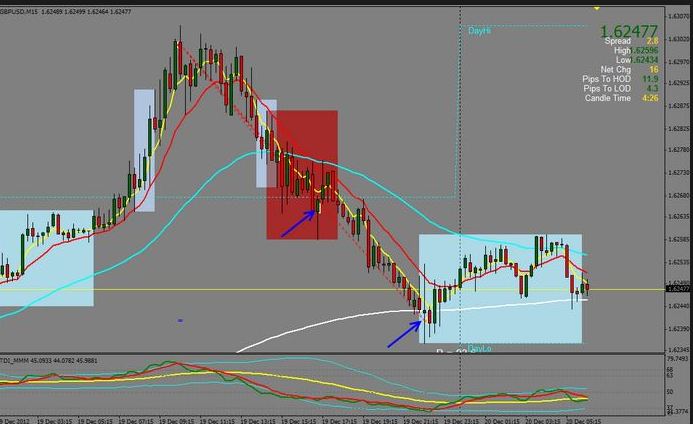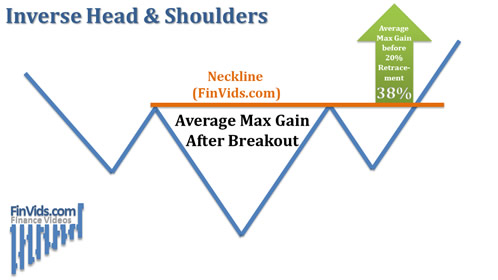Perpetual Inventory System Methods, Advantages and Disadvantages
Contents:


CAs, experts and businesses can get GST ready with ClearTax GST software & certification course. Our GST Software helps CAs, tax experts & business to manage returns & invoices in an easy manner. Our Goods & Services Tax course includes tutorial videos, guides and expert assistance to help you in mastering Goods and Services Tax.
Ex-flight attendant Fifo worker earns $2,400 a week in Pilbara mine then travels world every month – Daily Mail
Ex-flight attendant Fifo worker earns $2,400 a week in Pilbara mine then travels world every month.
Posted: Thu, 30 Jun 2022 07:00:00 GMT [source]
However, like all other techniques, FIFO too has certain downsides that can be detrimental to certain companies if not implemented correctly. For example, you might have to pay equally higher tax amounts while reporting higher profits on the less expensive, older inventory items. Let’s say a stationary company produced two batches of stationery products.
Software compatibility:
As properly, the LIFO method might not truly characterize the true value a company paid for its product. This is as a result of the LIFO method isn’t really linked to the tracking of physical stock, simply stock totals. The firms that decide to use LIFO over FIFO most frequently do it for the tax advantages.

This might include foods, medicine, and even technological products, like home appliances, computers etc. It is one of the most common methods used by various companies to store products that can go out of style or become obsolete if kept in storage for a long time. First In First Out, FIFO and Weighted Average are the two accounting systems that are allowed in India. As per the latest rules, businesses aren’t allowed to adopt the LIFO system in India. This makes FIFO the most common inventory accounting management system in India.
Also, the method of stock valuation affects the income of the company. FIFO is considered to be one of the best methods for inventory management because of the several benefits that it carries along with it. It helps deliver more accurate results and saves up a lot of time and money, both of which are essential for a company to sustain itself in the long run. Furthermore, with the help of FIFO, you can also minimize any loss and generate more profit for the company. FIFO helps to minimize this problem by shipping out the oldest products so that they do not spend too much time in the inventory.
Inventory Valuation Methods used in India (LIFO, FIFO, WAC, SIM)
However, on one particular day, the company was able to sell almost 80 six-packs of the particular item and automatically assumed that they would be able to keep up with this increased demand soon. So to meet this higher forecasted demand, the company asks for 100 six-packets of the particular item from the distributor. This means that the total cost of goods sold by the stationary company is $700, and the total inventory ending value is $1600.
- Furthermore, there are also chances that the current set-up of your warehouse might make it impossible to rotate new deliveries to the back-of-stock locations.
- A perpetual system is a better option for companies that need to monitor inventory levels closely.
- That is goods purchased first are consumed first in a manufacturing concern.
- Improving the bottom line and profit margins is one of the primary goals of a business.
- The 10 unsold notebooks are presumed to be from the oldest batch.
In such condition picking takes place irrespective of ageing of products this will lead to picking of fresh products instead of earlier received products. Also, there is lack of proper labeling on the products by which we can determine the ageing of products. It directly impacts the cost of goods sold, gross income, and the monetary value of the remaining items in the inventory. They might change their methods in the future, but they must get the required permission before doing so. The FIFO inventory method increases sales costs, also known as COGS. This measure of the cost of goods sold accounts for the total labour and materials costs minus distribution costs.
Uses of FIFO in Practice
The FIFO method is essentially beneficial for perishable goods, has a shorter shelf-life, and gets obsolete quickly. However, using the FIFO method to calculate inventory valuation can sometimes create discrepancies if the cost of goods sold increases considerably. And when it comes to maintaining accurate inventory records, keeping track of fluctuating inventory value is essential.
What are the advantages and disadvantages of FIFO?
FIFO also has several financial advantages over LIFO. FIFO usually results in higher inventory balances on the balance sheet during inflationary periods. It also results in higher net income as the cost of goods sold is usually lower. While this may be seen as better, it may also result in a higher tax liability.
The afore mentioned analysis and execution concluded that installing FIFO in your warehouse has several advantages. By sending the oldest things first, you can keep your products from deteriorating and your inventory from becoming obsolete. Because your items have spent less time in your warehouse, your consumers will get them in reasonably clean cartons. Obsolete inventory refers to items that have expired and are no longer valuable to customers.
Income Tax Filing
At the time of ending inventory, higher valuations are recorded. As a result, the price of the products sold increases comparatively slowly and leads to better profit levels. Various accounting software use the FIFO method for inventory as it is compatible with various business functions. Even if you consider other methods, you will find that they are more expensive than FIFO. The First-In, First-Out method is the valuation method or asset management method in which the assets acquired first or produced first are used, sold, and disposed of. For tax purposes, the FIFO method assumes that the asset with the oldest price is used in the income statement of COGS or cost of goods sold.
The costs related to the stock may be calculated in several methods — one being the FIFO technique. It is a technique used for cost move assumption purposes in the cost of items offered calculation. The LIFO method assumes that the most recent merchandise added to a company’s stock have been bought first.
Needed a Video for I need numerical based videos of topic FIFO and lifo as soon as possible? Related: Cost Accounting?
While this is not a hindrance, it is just something that should be considered while using the First In First Out inventory accounting system. Since older products are sold first, the latest products will always be in the inventory keeping in mind the latest products in the business which makes it trendy and up to date too. The managers with little to no accounting information would be able to understand it easily.
The LIFO reserve is an accounting time period that measures the difference between the primary in, first out and final in, first out value of inventory for bookkeeping purposes. In periods of rising costs, constant will increase in prices can create a credit score balance in the LIFO reserve, which results in decreased inventory costs when reported on the steadiness sheet. Under this method, the company assigns the same cost to each item in the inventory. To calculate the average cost, you need to determine the cost of available goods and then divide that number by the total number of items from the beginning inventory and purchases. This is one of the three most popular inventory management techniques, the other two being FIFO and LIFO.
A new perspective on Workload Control by measuring operating … – Nature.com
A new perspective on Workload Control by measuring operating ….
Posted: Fri, 26 Aug 2022 07:00:00 GMT [source]
Due to these loopholes orders are processed irrespective of its expiry which leads to expiration of validity period of SOR inventory. After the time frame of 90 days, we have to return the inventory to vendor, this will lead to potential loss to the company. The data available in the system is not sufficient to determine the foolproof picking strategy. As the system does not aware of ageing criteria and picking sequence, the picking is carried out from random locations.
Under this method, businesses can cover the item left in inventory at the end of the month or the year under the cost of the most recent goods sold. The accounting system for First In First Out is very easy since it takes into accounts the prices of goods as and when they come and enter those in the balance sheet according to those prices. Due to this, the documentation and paperwork of this method are also easy to adapt.
The FIFO system, also known as First-In, First-Out, is a stock or inventory management method where the oldest stock is sold or consumed first. This helps to ensure that goods are not left behind and they do not expire before they can be sold. FIFO method ensures accuracy in inventory valuation and helps to avoid incorrect calculations and incorrect profit numbers.
- By using the FIFO method to calculate inventory valuation, you show a recent value of your inventory.
- On average, the company can sell only 20 six-packs of the particular brand and accordingly asks for a refill from the distributor.
- In such scenarios, it becomes challenging for you to determine cost of goods sold and ending inventory.
Furthermore, there are also chances that the advantages of fifo set-up of your warehouse might make it impossible to rotate new deliveries to the back-of-stock locations. All these changes are extensive and can consume much more time than preferred. Many companies often do not know what their supplier’s inventory looks like. Although the stated example only highlights a scenario with a higher demand at the customer level. Let’s say that a food company keeps 100 six-packs of one snack brand in stock. On average, the company can sell only 20 six-packs of the particular brand and accordingly asks for a refill from the distributor.
What are the advantages of FIFO method?
The advantages to the FIFO method are as follows: The method is easy to understand, universally accepted and trusted. FIFO follows the natural flow of inventory (oldest products are sold first, with accounting going by those costs first). This makes bookkeeping easier with less chance of mistakes.
In this article, we have seen what is FIFO and why FIFO is one of the accounting system’s most widely used accounting methods for inventory pricing. It also helps to relate to how inventory moves through your store or warehouse, to manage inventory easily. A business called Fresh Food purchased 80 boxes filled with oat treats at a price of Rs. 30 for each box.

Product-oriented organizations utilize various inventory methods, which help them calculate their stock. It accounts for scenarios when the price of products and goods increases with time. The FIFO method considers the required financial reporting standards in the financial reporting. Also, with the FIFO method, it becomes challenging to manipulate financial records.
As a end result, the ending inventory balance is valued at earlier costs whereas the newest prices seem in the cost of goods sold. By moving high-value inventories to price of goods offered, businesses can lower their reported profit levels and defer income tax recognition. Therefore, income tax deferral is the most common answer for utilizing LIFO whereas evaluating current assets. Due to this, it’s strictly banned according to requirements of economic reporting; nonetheless prevalent across US. The LIFO (Last-in, first-out) process is principally used to place an accounting value on inventories. It is based on the idea that the last inventory merchandise purchased is the primary one to be sold.
What are the advantages of FIFO and LIFO?
FIFO focuses on using up old stock first, whilst LIFO uses the newest stock available. LIFO helps keep tax payments down, but FIFO is much less complicated and easier to work with. However, it is all down to the company you own as to what method you choose.


Leave a Reply
Want to join the discussion?Feel free to contribute!